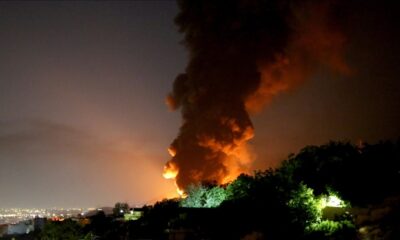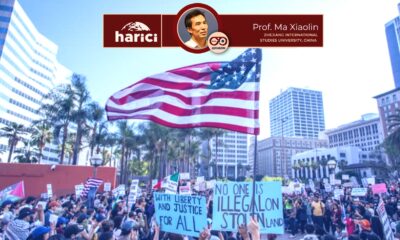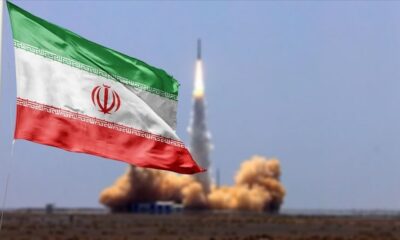Middle East
Israel intensifies attacks on Gaza hours after ceasefire agreement
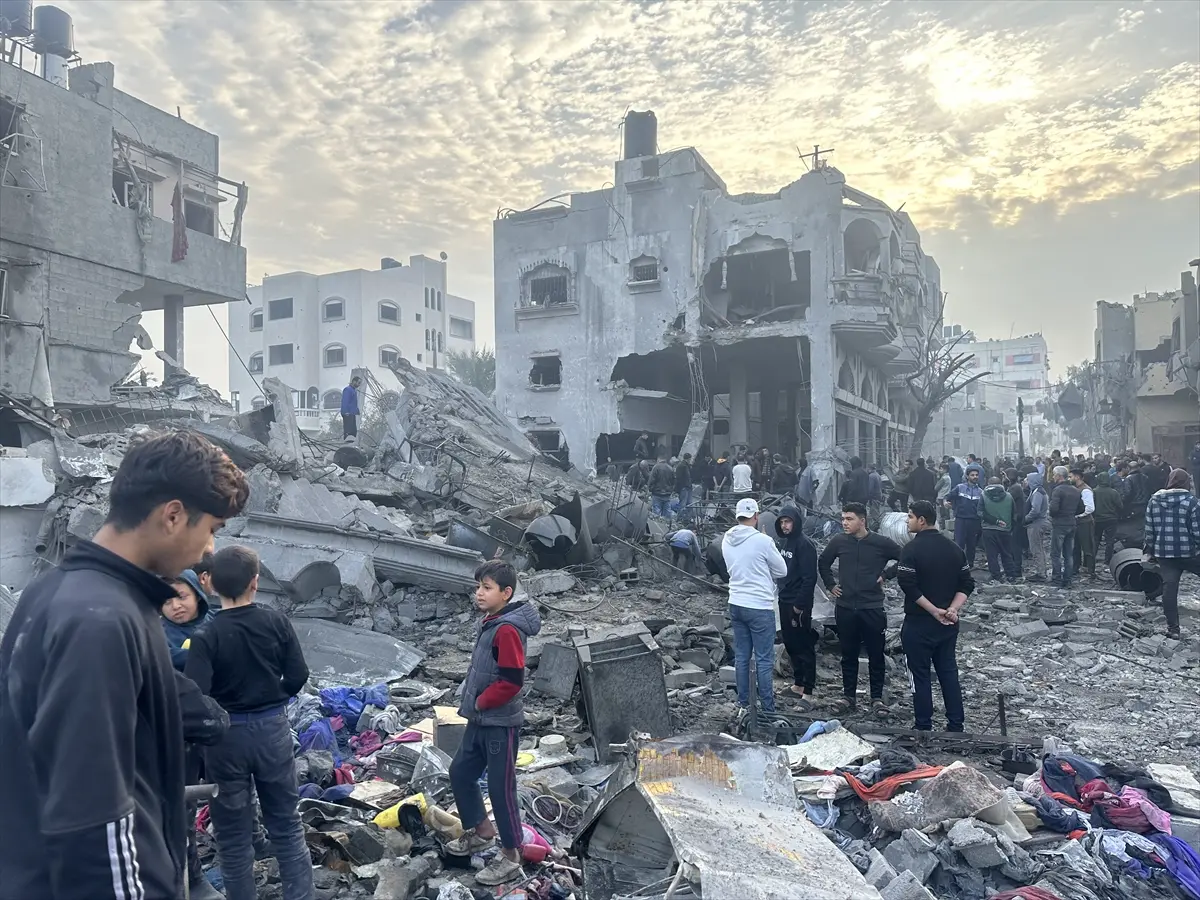
Palestinian residents and officials reported that Israel intensified its attacks on Gaza just hours after a ceasefire and hostage release deal was announced. Mediators worked to quell the fighting ahead of the ceasefire, which is set to begin on Sunday.
The complex agreement between Israel and Hamas, reached on Wednesday after 15 months of bloody conflict, has significant implications for the Middle East. The deal outlines an initial six-week ceasefire, a gradual withdrawal of Israeli forces from the Gaza Strip, and the release of hostages taken by Hamas in exchange for Palestinian prisoners held by Israel.
In the hours leading up to the ceasefire, the Israeli military escalated its attacks. On Thursday, a rocket was fired from Gaza into Israel, though no casualties were reported. Israeli airstrikes continued overnight and into early Thursday, killing at least 46 Palestinians, according to Gaza health officials.
At a press conference in Doha, Qatari Prime Minister Sheikh Mohammed bin Abdulrahman Al Thani confirmed that the ceasefire would take effect on Thursday. He emphasized that negotiators were working closely with Israel and Hamas to implement the agreement.
US President Joe Biden welcomed the deal, stating, “This agreement will halt fighting in Gaza, deliver much-needed humanitarian aid to Palestinian civilians, and reunite hostages with their families after more than 15 months of captivity.”
An Israeli official noted that the deal would not be official until approved by the country’s security cabinet and government, with a vote expected on Thursday. Despite opposition from hardliners in Prime Minister Benjamin Netanyahu’s coalition, the agreement was widely expected to pass.
Celebration andcaution in Gaza
While civil emergency services and residents in Gaza and Israel celebrated the agreement, some Gaza residents expressed caution on social media, urging vigilance in case Israel intensified attacks before the ceasefire began.
In Khan Yunis, crowds filled the streets, cheering, waving Palestinian flags, and dancing to the sound of honking horns. The ceasefire news brought hope to a region grappling with severe shortages of food, water, shelter, and fuel.
In Tel Aviv, families and friends of Israeli hostages also welcomed the agreement. Officials in Gaza emphasized that the ceasefire, if successful, would halt a conflict that has devastated urban areas, killed over 46,000 people, and displaced most of the enclave’s pre-war population of 2.3 million.
The first phase of the deal calls for the release of 33 hostages, including women, children, and men over 50. Among those to be released are two American hostages, Keith Siegel and Sagui Dekel-Chen.
The agreement also provides for increased humanitarian aid to Gaza. The UN and the International Committee of the Red Cross announced preparations to expand relief operations.
International leaders, including those from Egypt, Turkey, the United Kingdom, the European Union, Jordan, Germany, and the United Arab Emirates, celebrated the agreement. Both President Biden and former President Donald Trump expressed support for the deal.
Three-phase plan for Gaza
The second phase of the agreement, set to begin on the 16th day of the ceasefire, will focus on releasing all remaining hostages, establishing a permanent ceasefire, and ensuring the complete withdrawal of Israeli forces from Gaza.
The third phase envisions the return of all remaining bodies and the start of Gaza’s reconstruction under the supervision of Egypt, Qatar, and the United Nations. If successful, the agreement could pave the way for a long-term resolution, including discussions on post-war governance in Gaza.
Asia
US cries to China as Washington begins airstrikes in Iran
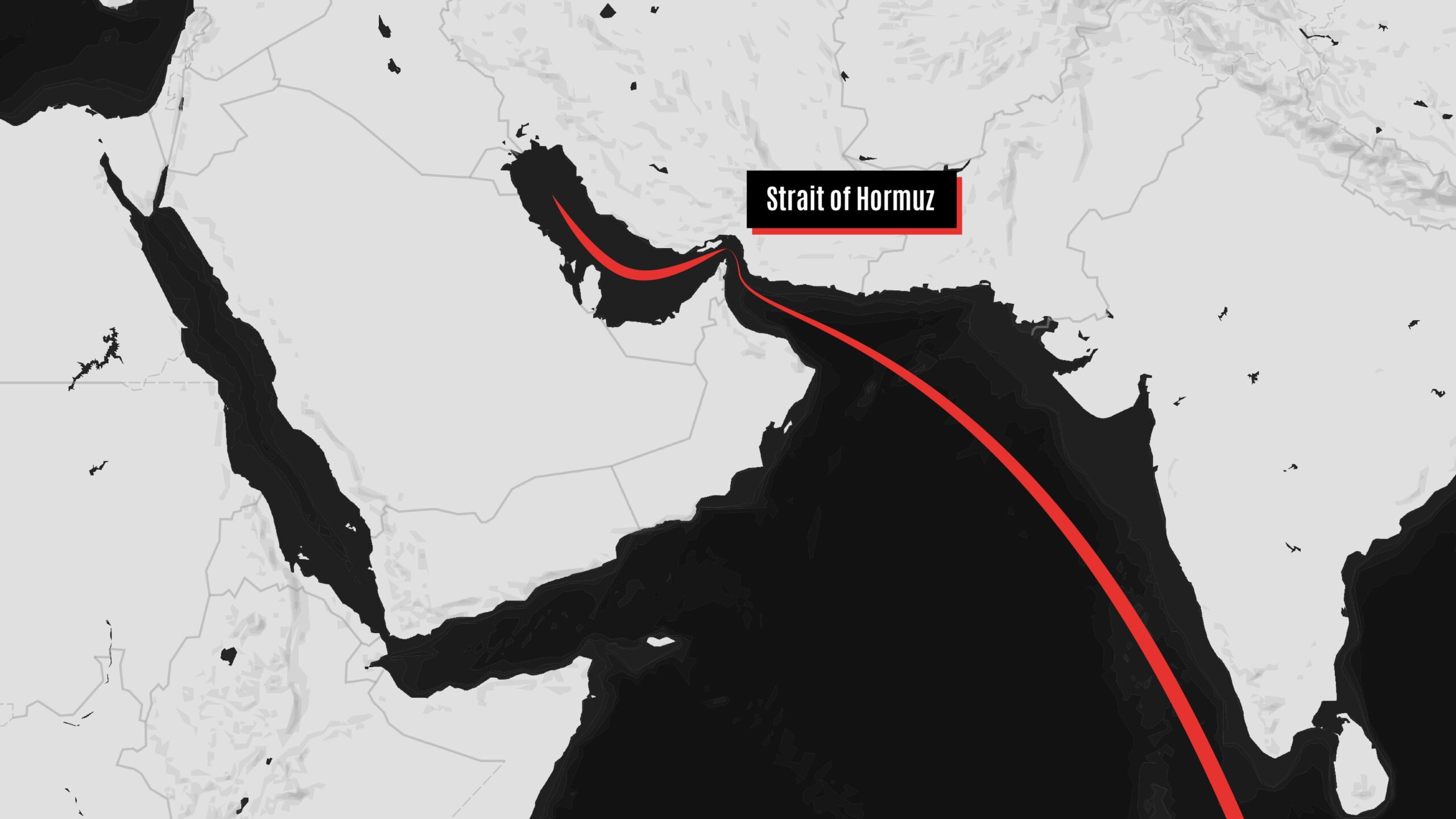
While the Middle East is going through one of its most tense periods, the world has been shocked by the news of a direct attack by the United States on Iran’s nuclear facilities. Washington has announced that Iran’s nuclear facilities no longer exist. At the same time, Tehran has warned in a strong tone that it will respond to this aggression.
This action was immediately met with widespread regional and international reactions. The United Nations, the European Union, global powers such as Russia and China, and America’s traditional allies in the West each took their own stance.
At an emergency meeting of the United Nations, Secretary-General Antonio Guterres described the move as a dangerous turn in an already crisis-ridden region. A wave of criticism has also emerged within the United States, with some describing the attack as successful.
At the same time, a number of lawmakers from both the Republican and Democratic parties consider Trump’s action to be without congressional authorization and unconstitutional.
Some reactions:
Russian envoy: US attack carried out without any provocation from Iran.
US Representative: The Iranian regime should not have nuclear weapons.
Iran’s ambassador to the Security Council: America once again sacrificed its security for Benjamin Netanyahu.
Israeli Ambassador to the Security Council: America changed the course of history by attacking Iran.
Rafael Grossi, the head of the International Atomic Energy Agency: Military attacks should not be carried out on nuclear facilities, saying he is ready to immediately travel to all countries regarding this case.
UK UN envoy: Military action alone cannot address concerns about Iran’s nuclear program, saying his country was not involved in Iran attack, referred to concerns about Iran’s nuclear program and said that military action alone cannot permanently address concerns about Iran’s nuclear program. He called on Iran to exercise restraint and urged the parties involved to return to the negotiating table.
France: Now is the time to end the attacks and return to negotiations.
But now why US cries to China for help to reopen Strait of Hormuz
Soon after a US airstrike in three locations, Iran closes the Strait of Hormuz, one of the world’s most important shipping routes. Now this move puts the US in trouble and US Secretary of State Marco Rubio has called on China to prevent Iran from closing the Strait of Hormuz.
However, it seems that the US is too late and according to Iran’s state-run Press TV, the decision was made by Iran’s Supreme National Security Council.
The US understands that any disruption on the supply of oil would have profound consequences for the economy and wants to play an emotional card with China to convince Iran to reopen the route as Beijing is also one of the largest buyers of Iranian oil.
It is reported that 20 percent of the world’s oil passes through the Strait of Hormuz, and major oil and gas producing countries in the Middle East use this route to export energy.
Meanwhile, US President Donald Trump has said that regime change is inevitable if the Islamic Republic cannot “make Iran great again.” His statement came following US military strikes on Iranian military facilities.
Iran: Game is not over even assuming the complete destruction of the nuclear sites
Ali Shamkhani, advisor to Ayatollah Ali Khamenei, the religious leader of Iran, has said in response to the US attacks that even assuming the complete destruction of the nuclear sites, the “game is not over”.
“Even assuming the complete destruction of the sites, the game is not over; because the enriched materials, indigenous knowledge, and political will remain intact,” he said.
He noted that “now the political and operational initiative with the right to self-defense is in the hands of the side that knows how to play smart and avoids blind shooting.”
Middle East
Oil prices hit new highs amid US-Iran tensions
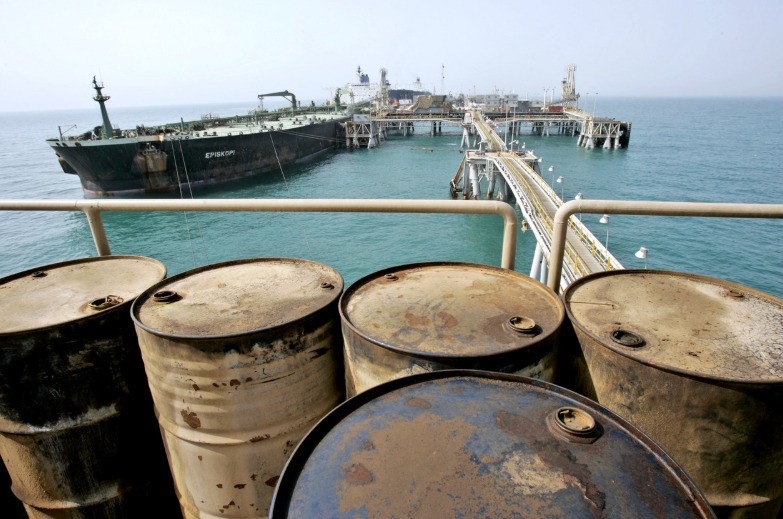
Oil prices climbed to their highest levels since President Donald Trump took office on Sunday evening, as energy markets braced for a potential US military strike on Iran’s nuclear facilities and Tehran’s subsequent retaliation.
US crude oil futures surged over 6% to $78 per barrel, more than $1 above the price on January 20, when Trump was inaugurated. This increase is expected to impact gasoline prices just as American drivers prepare to hit the road for the upcoming Fourth of July holiday.
Trump campaigned on a promise to lower consumer energy prices as part of his “energy dominance” agenda. However, the average pump price for regular gasoline is now approximately $3.22 per gallon, about 10 cents higher than when he took office, and it is likely to rise further this week.
The extent of future oil price increases will depend on Tehran’s reaction to any attacks. The Iranian parliament has already voted to close the Strait of Hormuz, a critical chokepoint through which a quarter of the world’s seaborne oil passes. The decision now awaits the approval of Supreme Leader Ali Khamenei.
Even if approved, the impact on the oil market will hinge on whether Iran and its allies merely harass oil tankers passing through the strait or launch a full-scale operation to block traffic entirely.
Reports that the White House gave Iran advance notice of the bombings and assured them there would be no further attacks suggest the Trump administration is trying to avoid a full-scale war, which could help keep oil prices in check.
Energy analysts have warned that a disruption to maritime traffic in the Strait of Hormuz could push oil prices above $100 per barrel.
Scott Modell, CEO of the energy and geopolitical analysis firm Rapidan Energy Group, commented, “This choreography suggests that both sides want to contain this crisis, not lose control of it. We think Iran’s response will be staged: harassment of commercial vessels, symbolic seizures of tankers, and limited rocket attacks on US military outposts. But we do not foresee a full-scale campaign to completely cut off energy flows in the Strait of Hormuz.”
Some market analysts believe that even if the conflict escalates, the US, OPEC countries like Saudi Arabia, and other suppliers have enough product to meet demand.
However, others caution that the price surge may have just begun. In a note, BCA Research analyst Roukaya Ibrahim stated, “It is true that these oil market dynamics show investors are adding a higher risk premium, factoring in the increased likelihood of an oil supply shock. But the more important question is whether this pricing adequately reflects the level of risk. Our impression is that the pressure on crude oil prices will remain upward in the near term.”
Middle East
US bombs Iranian nuclear sites, sparking fears of wider conflict

US President Trump announced that American aircraft bombed Fordo, Natanz, and Isfahan, and that Israel participated in the air campaign against the Islamic republic.
The decision to attack Iran is seen as a potential turning point for Trump’s presidency, which began its second term with promises to be a peace envoy who would end “endless wars.”
The attack raises the possibility of Iranian retaliation against the US, particularly targeting military bases and ships in the region, as well as other interests like oil supplies. Trump stated that if Iran’s retaliatory strikes target the US, he will respond again.
This attack represents a political gamble for the president at a time when his MAGA (Make America Great Again) base is fiercely divided between hawks who want the US to go to war with Iran and those who believe the US should stay out of foreign conflicts.
After holding a national security meeting at the White House on Saturday evening, Trump wrote on Truth Social, “We have just completed our very successful attack on three nuclear sites in Iran, including Fordo, Natanz, and Isfahan. All aircraft are now out of Iranian airspace.”
“Fordo, the main target, was hit with full-load bombs. All planes are returning home safely,” he said.
The US president claimed that the attack, carried out by American aircraft and submarines, resulted in the “complete destruction” of Iran’s key nuclear enrichment facilities.
According to state media, Iranian officials confirmed the attack on the three nuclear sites.
Stating that they worked as a team with Israeli Prime Minister Benjamin Netanyahu in the attack on Iran, Trump said, “Iran must make peace. If this is not done, the next attacks will be much heavier.”
“Our goal was to destroy Iran’s nuclear enrichment capability and stop the nuclear threat posed by the world’s number one state sponsor of terror,” Trump said, describing the overnight attacks as a “magnificent success.”
According to a senior White House official, the US president and Israeli Prime Minister Benjamin Netanyahu spoke after the attacks. The official added that the US had informed Israel in advance of its plan to bomb the nuclear facilities.
“Facility had been evacuated”
An adviser to the speaker of the Iranian parliament said that Tehran had been expecting an attack on Fordo.
“From Iran’s point of view, nothing too strange happened,” Mahdi Mohammadi wrote on X.
“Iran had been expecting an attack on Fordo for several nights. The facility had been evacuated for some time and did not suffer irreversible damage from the attack.”
It was reported that there was no nuclear leak at the Fordo facility, one of Iran’s most critical nuclear sites, following the US attack.
An official from the governor’s office in Qom province, where the Fordo uranium enrichment facility is located, made a statement to Anadolu Agency.
The official said, “The Fordo nuclear facility was attacked by the United States and this facility was damaged, but there is no nuclear leak in or around it.”
Meanwhile, Iranian state television, without confirming the attack reports, had announced that the facilities were evacuated beforehand and the nuclear materials were moved to another location.
Washington contacts Tehran
In a second post on Truth Social, Trump said, “IRAN MUST NOW AGREE TO END THIS WAR. THIS IS A HISTORIC MOMENT FOR THE UNITED STATES, ISRAEL, AND THE WORLD.”
It was claimed that after hitting the three nuclear facilities in Iran, the US contacted Tehran to convey that its goal was not regime change.
According to a report by CBS News, citing US sources, the Washington administration sent a diplomatic message to Tehran after striking the three nuclear facilities, emphasizing that the attacks were carried out entirely by them and that they had no intention of seeking regime change.
CBS News had previously reported, based on information from multiple sources within the US administration, that President Trump had opposed a plan to assassinate Iran’s supreme leader, Ayatollah Ali Khamenei.
Netanyahu expresses thanks
Israeli Prime Minister Benjamin Netanyahu thanked US President Trump for announcing the attack on Iran’s three nuclear facilities.
Prime Minister Netanyahu posted a video message on his X account, thanking President Trump for his decision to strike Iran’s nuclear sites.
“Congratulations, President Trump. Your courageous decision to target Iran’s nuclear facilities with the magnificent and righteous power of the US will change history,” Netanyahu said.
Claiming that Israel was doing “amazing things” with its attacks on Iran, Netanyahu argued that the US had truly achieved a “unique success” with the attack it carried out tonight.
Arguing that the US attack on Iran was a “historic turning point” that would bring peace to the Middle East, Netanyahu asserted, “President Trump and I often say peace through strength. First comes strength, then comes peace. And tonight, President Trump and the US acted with great strength.”
What were they hit with?
It was claimed that the US struck Fordo, the most important of Iran’s three nuclear facilities, using six bunker-buster munitions, while the other two facilities were destroyed by 30 Tomahawk missiles launched from American submarines in the region.
Fox News host Sean Hannity said on his live program that he had just spoken with US President Donald Trump by phone, and Trump told him that 30 Tomahawk missiles were also launched from American submarines approximately 645 kilometers away in the attacks on Iran’s nuclear facilities.
Hannity recalled that it had previously been suggested that at least two GBU-57 A/B “Massive Ordnance Penetrator” bunker-buster munitions would be needed for Iran’s Fordo nuclear facility, but he learned in his conversation with the US president that six bunker-busters were used.
“The other two major Iranian nuclear facilities, Natanz and Isfahan, were destroyed by 30 Tomahawk missiles launched by American submarines about 645 kilometers away,” Hannity added.
B-2s also participated
The US had previously moved B-2 stealth bombers, which were believed to be en route to a base in Guam. The American “bunker buster” bombs carried by the B-2s were seen as the most suitable weapon to destroy Iran’s uranium enrichment facility at Fordo, which is buried deep inside a mountain.
According to information obtained by the American news site Axios from an Israeli official, B-2 heavy bombers were also used in the attack.
“Unconstitutional”
Republican foreign policy hawks in Congress applauded the president’s military move. US Senator Lindsey Graham said, “This was the right decision. The regime deserves it.” Senator Jim Risch, the powerful chairman of the Senate Foreign Relations Committee, applauded Trump’s “decisive action” to help Israel, saying, “This is not the beginning of an endless war. There will be no American troops on Iranian soil.”
Democratic US Senator John Fetterman also praised Trump, saying the president made the “right move.”
However, Republican Representative Thomas Massie said the decision was “unconstitutional.”
Atomic Energy Organization of Iran: We will not stop
The Atomic Energy Organization of Iran (AEOI) condemned the US attack.
The organization stated that the three nuclear facilities were operating under the full supervision of the International Atomic Energy Agency (IAEA) under the Treaty on the Non-Proliferation of Nuclear Weapons (NPT) and that the “barbaric attack” on these facilities violated international law.
The AEOI said the attack was carried out “under the indifference, or even complicity, of the International Atomic Energy Agency.”
“The international community is expected to condemn this lawlessness based on the law of the jungle and to stand by Iran in defending its legitimate rights,” the statement said, guaranteeing the “great Iranian nation that the progress of this national industry will not be allowed to be stopped despite the treacherous conspiracies of the enemies.”
“The organization has placed on its agenda all necessary measures, including legal follow-up measures, to defend the rights of the noble Iranian people,” it added.
Iran launches retaliation: Missiles toward Israel
On Sunday morning, the Israeli army announced Iranian retaliatory attacks. It stated that it had detected about 20 missiles fired from Iran toward the central and northern regions of Israel.
Loud explosion sounds were heard throughout Israel, and Israel’s emergency service, Magen David Adom (MDA), was dispatched to several areas where impacts were reported.
There were reports of impacts in the northern and central regions of Israel, with 10 missiles reportedly hitting their targets.
The army added that defense systems were activated to intercept the threats.
In the event of a warning, the public was instructed to enter a protected area and remain there until further notice.
Iranian retaliatory attacks are expected to continue in the coming hours.
June 13
On June 13, Israel launched wide-ranging attacks targeting nuclear facilities in various Iranian cities, as well as the army’s high command.
Iran’s Chief of General Staff, the Commander-in-Chief of the Revolutionary Guards, some senior commanders, and nine nuclear scientists were killed in the attacks.
In a statement on June 21, the Iranian Ministry of Health reported that the total civilian death toll from the Israeli attacks was 430, with more than 3,500 injured.
Iran launched retaliatory attacks. The Israeli Prime Minister’s Office reported that 24 people were killed and 1,272 were injured in the retaliations carried out by the Iranian army.
Many countries, including Türkiye, China, Russia, and Pakistan, condemned Israel.
-
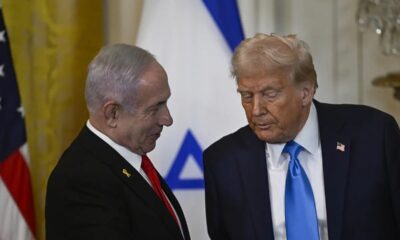
 Middle East3 days ago
Middle East3 days agoUS to launch major bombing campaign against Iran this weekend, Hersh reports
-
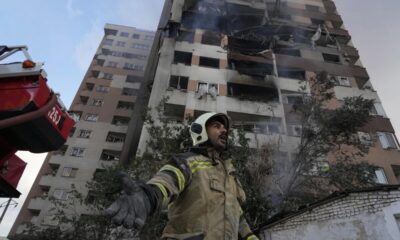
 Diplomacy1 week ago
Diplomacy1 week agoFormer diplomat warns forcing Iran out of the NPT is the greatest danger
-
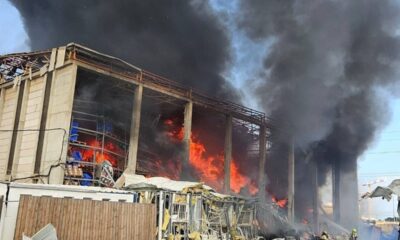
 Middle East6 days ago
Middle East6 days agoIran targets Mossad and Unit 8200 in missile attack on Tel Aviv
-
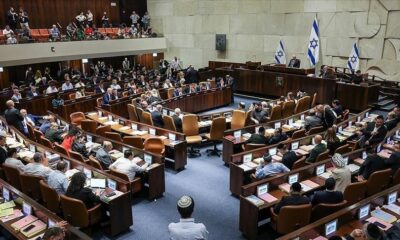
 Middle East2 weeks ago
Middle East2 weeks agoNetanyahu’s government survives no-confidence vote as Haredi crisis is delayed
-
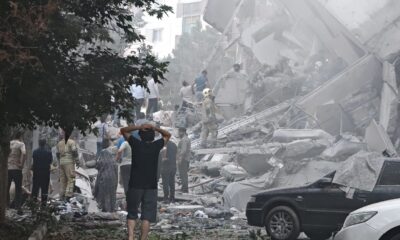
 Diplomacy1 week ago
Diplomacy1 week agoFormer CIA analyst says Israel used ceasefire talks as a trap
-
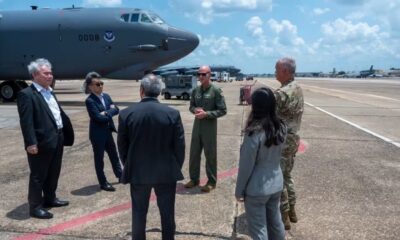
 Asia2 weeks ago
Asia2 weeks agoJapan, US showcase B-52 bombers in nuclear deterrence dialogue
-
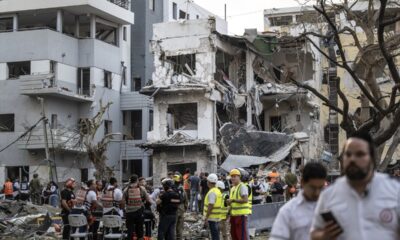
 Middle East1 week ago
Middle East1 week agoIranian missile attack causes heavy damage across Israel
-
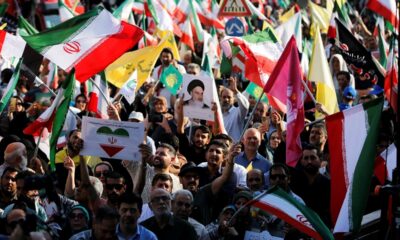
 Diplomacy1 week ago
Diplomacy1 week agoChinese academic analyzes Israel-Iran conflict for Harici: Iran holds strategic importance for China


